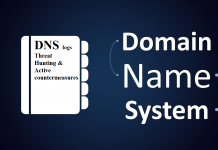Do you know whether your implementation plan continues to produce results, or did it unobtrusively go out of touch with the reality of your project?
In dynamic environments, even the best-laid plans can become obsolete sooner than anticipated. A roadmap that initially seemed well-organized may be a bottleneck as soon as it ceases to be revisited.
This is why it is as crucial to understand when you should update your implementation plan as to create it.
As your business grows and evolves (whether due to new insights or a shift in priorities), your implementation plan should also adapt to these changes. Unless updated promptly, misaligned work, unclear roles and responsibilities and aging schedules can ruin the process and deplete the drive.
Luckily, revisiting your plan comes at key junctures that can bring clarity to the team, enhance team accountability, and help your strategy reach its full potential.
Whether undergoing a response to performance metrics or meeting some milestone you set on a project, strategic reviews keep your execution in shape, nimble, and on point.
In the sections that follow, you will find out when you need to revise your implementation plan and how this can help to change everything. Continue reading to update your plan, make it achievable, and focus on success.
What is an Implementation Plan

An implementation plan outlines how a project will be managed and describes its progression from conception to completion.
It is a time-based list of tasks along with clear deadlines so that every step is visible and actionable. Additionally,implementation plans serve as a single source of truth: a fluid document that ensures teams are aligned on responsibilities, progress, and priorities.
This plan breaks down each phase into manageable tasks, assigns ownership, and highlights necessary resources.
It facilitates better decision-making and accountability by making dependencies and real-time status visible. The plan naturally evolves as requirements change and keeps everyone updated and on track.
This visual format ensures that nothing gets lost between the cracks, and that everyone on your team knows what needs to happen and when. Through this approach, execution is accelerated, outcomes are more assured and stakeholder engagement is markedly enhanced.
When to Update Your Implementation Plan
An implementation plan isn’t something you set and forget—it should evolve with your project. Staying static in a changing environment can quickly lead to misalignment and stalled momentum. To keep your efforts relevant and impactful, you must know when to pause, reassess, and adapt. Timely updates not only safeguard progress but also sharpen your strategic focus moving forward.
1. After Major Business Shifts
Your implementation plan should be adapted immediately after any significant shift in the business.
A merger, acquisition, restructuring, regulatory change, or market disruption all necessitate a shift in the existing plan, as it is likely that it does not accurately reflect current conditions.
In these scenarios, existing goals, resources, and even customer perceptions can shift greatly. Failing to adjust can create a disconnect that leads to inefficient effort and squandered opportunities.
As such, objectives need to be reset, redesign responsibilities, and check if the timelines are still relevant.
Just as important is conveying the changes to the plan to the team to avoid a drop in motivation and confusion.
Transitioning without reevaluating the plan is akin to sailing without modern navigational tools—dangerous and unproductive.
Therefore, use major changes as an opportunity to refine the approach while ensuring the team remains aligned and continues to work toward shared goals. The speed of response directly correlates with regaining clarity and an executive pace.
2. On a Regular Cadence
Set a timeline for re-evaluating your implementation plan, even if everything is running smoothly.
Consider set intervals, such as monthly or quarterly, as your baseline. Regular reviews help identify emerging concerns pre-emptively and ensure self-governance across the team.
In the absence of these milestones, it becomes far too easy to drift from goals and prioritize incorrectly.
Thus, it is important to use each interval to measure progress, assess KPIs, and check alignment with the overarching strategy.
Make immediate adjustments to anything that doesn’t make sense, as waiting for a crisis is not a strategy. Furthermore, strategic check-ins promote a culture of ongoing advancement.
In this way, cadence isn’t just a management tool—it’s a discipline that ensures your implementation plan remains actionable and results-driven.
3. At Key Project Milestones
Each time you reach a key project milestone, it’s essential to revisit your implementation plan.
Milestones are pivotal moments beyond celebrating progress, where you must think deeply about what needs to be recalibrated or redirected.
Pausing at these moments helps you identify what has gone well, the barriers you faced, and how your resources, timeline, or deliverables need to be adjusted.
Plans crafted at the beginning of a project may need to be altered during execution due to new, insufficient dependencies and team structures that emerge as the project progresses.
Your project’s next phase requires updating plans to ensure they are grounded in real-world insights and not mere assumptions. With regards to timelines, these reviews provide better clarity as well as enable everyone to trust that their work is aligned with shifting priorities.
Overall, with the turn of habit, making milestone reviews routine ensures every phase is more precise, well-informed, focused and much more likely to succeed during implementation.
4. In Response to Performance Insights
If your analytics indicate that you are missing critical goals, it is time to reflect on your implementation plan and make adjustments. Sticking to a plan that is not working is not an option.
Metrics such as delayed timelines, missed KPIs, or over-extended resources are clear signs that adjustments are needed. Don’t ignore these indicators—dig into the “why” behind the numbers. Are tasks poorly defined? Are resources misaligned? Are priorities unclear?
Once you’ve identified the root causes, reassigned duties, and reassessed your goals as necessary, proceed accordingly.
Ensuring grounded strategies requires plans to be updated based on real insights, rather than mere intentions. Doing so will save time, reduce frustration on your team, and streamline resource allocation.
Wrapping Up
You have the power to keep your implementation plan effective by updating it at the right moments—after major changes, at regular intervals, during key milestones, and in response to performance insights.
Taking these steps helps you prevent misalignment, maintain momentum, and ensure that your team stays focused on what truly matters.
By regularly reviewing and realigning your plan, you create a dynamic process that adapts to change and overcomes challenges. This approach turns success from a mere hope into a consistent habit.
So, stay proactive, keep your strategy sharp, and watch your goals move steadily within reach!



































